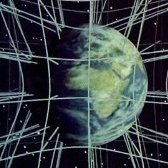Leaderboard
Popular Content
Showing content with the highest reputation on 08/18/20 in all areas
-
One would think that a man who's on his second mail order bride wouldn't have such negative things to say about the post office.2 points
-
We're all familiar with how certain concepts in science are difficult to grasp, or perhaps to remember. Mottos are these pieces of wisdom that try to capture an idea and make it easier to grasp yourself, or to get across to others through an intuitive verbal formulation. Some of them can be quite unfortunate. They shall not be mentioned here, if possible. So my suggestion is: Let's all share those brief phrasings that have helped us remember an idea, understand it better, keep it closer to our hearts and brains. They can be our own creation or found elsewhere and treasured ever since. One example could be (these are my own): "Velocity is the parameter which tells you what time and space directions you're looking at when you're moving" (special relativity) Or: "A tensor is a product of projections of physical quantities; different observers see different projections; but if they knew the rules of rotation, they would all relate their data and say: 'Oh, we're all seeing the same thing!'" (general relativity, tensor calculus) I invite you all to share brief formulas like these that you've found useful to capture an idea, whether you've devised them yourselves or you've found them somewhere else and retained them as useful conceptual tools. Keep in mind that the more rigorous you try to be, the less memorable the motto. If you don't like mine, feel free to tell me. All science areas welcome.1 point
-
This wasn’t my idea but Edward Snowdens which I heard on an episode of Startalk and it just struck me as a very compelling argument. He posited that an intelligent species would have a relatively small window of broadcasting radio signals in the clear before they started encrypting all their radio communications to be indistinguishable from background noise as a matter of course. Personally I can’t think of any reason why this couldn’t be true and it makes perfectly good sense. It also makes me think that it may already be happening but that’s besides the point. What do you guys think?1 point
-
Da, it normally only flips every 8 years. Been an... interesting... four years though so I'm hoping we get lucky.1 point
-
I think it goes, as mentioned here many times, that there are serious, systemic-societal issues there, which sets the US police forces up to where they are today.1 point
-
This is the problem with routine arming of officers, they can become complacent/lazy and fall back on their weapons in all stop situations. I also think it alienates the public on a general level,, rendering them more inaccessible and less personable in routine situations.1 point
-
You guys' wish to bring manifolds and fields into it got me thinking. What does this mean for local and non local ? What in fact are these terms applied to ? The space or subspace itself, or some property or characteristic of the space? A good working definition of global might be to take the expression used to define the property at some point in the space and see if it can be used at other points. If it can be used at every point it could be considered global, otherwise local. So let us apply that to a field which occupies the space. First a scalar field. Say temperature. If we have a table of T at some points can this be used to determine T at the rest of the points ? Interestingly for the other thread, isn't the answer "not without time" ? In other words, not without additional information. So temperature in a space that does not include time is local. So how about a vector field ? Well a vector is an object with a magnitude and a direction (isn't it ??) I am going to start with field that has no magnitude anywhere. A direction field. And my definition for the direction is derived from a purely random function. So the direction at every point is purely random. So the direction of not even neighbouring points can be determined from the direction at any point, although all directions at every point ae derived from the same function. So is this field local or global ?1 point
-
I think that is an important distinction. From what I have seen armed police in the UK usually engage in situations which go beyond situations where deadly force by police are considered justified in the US. There appears a large gap between what is considered a threat in the UK vs in NA.1 point
-
Yes, the outcome of a lot of US police interventions seems predestined to come to a violent conclusion.1 point
-
Indeed as with the case in the Westminster bridge attack, which I have mentioned elsewhere in this thread. I am guessing your from the UK, I watched Dom (Dom Littlewood) Does America this morning, ( 18/8/2020 ) he was working with the Texas police department, they carry spray, taxers and guns of course, but go in to every situation as if it is hostile, even a routine car stop, and they expect to be shot at and maybe killed.1 point
-
They can also bring in officers from outside a force to review the events.1 point
-
Generally speaking there is no selective pressure to maintain incompatibility. Quite the reverse, actually. Factors that introduce incompatibility (i.e. increase infertility in certain pairings) are more likely selected against, as the potential mating pool decreases. If in the same habitat, there is more likely of intermixing and maintenance of some level of compatibility is a likely scenario. Once separated, the genetic pools can drift further apart.1 point
-
Trying to extrapolate effects in biology are often difficult- there is little evidence that action potential velocity leads to better processing. There are a lot of constraints (including energetic ones) and I think the physiological consequences are unclear. That being said, axon diameter actually do show some dynamics. Neurofilaments regulate axon dimensions and swelling has been observed during action potential generation as well as via mechanical tension of the cytoskeleton. Intuitively it makes sense to increase action potential velocity in connections that are heavily used rather than broad range increase which might mess up timing and activity coordination.1 point
-
waves/particle/fields are not what these thing are, they are just how we describe them. The map, not the country. (With thanks to @Strange )1 point
-
My prediction: Both circuits would keep at a certain (varying distance) due to the monopolar term, which dominates at larger shorter separations, but oscillating because of the unstable 2-dipolar (in total quadrupolar) flipping effect, going like a higher inverse power of the distance, and thereby radiating. How come your photons radiate? Your graph is incorrect. But even if you were right, the attractive branch would have to go upside-down, and the graph that you're showing is that of an unstable equilibrium. Very well put. +11 point
-
You still don't get it... If an electric and magnetic field are needed to hold this 'mathematical' structure together, then, an electric or magnetic field can break that structure. What would result ?1 point
-
It might seem like everyone is 'ganging up' on you, but this is an important point. Anything that has 'structure' has to have 'something' holding that structure together. That same 'something' should, then, be able to render that structure asunder. IOW, they cannot be fundamental.1 point
-
First two laws of Thermodynamics: 1. You can't get something for nothing 2. Even at best you can't break even (Hope I remembered that correctly! 😄)1 point
-
Consider this: In the same way, a quantum object is neither particle nor wave, nor both - but it may appear as either one of these, depending on how you look at it. Note that the 'either-or' categories do not apply here, because that duality belongs into the classical world; but a quantum object is not classical. So there is not actually any problem here that needs to be solved.1 point
-
If I understand you correctly, If I'm not too late to this discussion, you experienced something in a dream you didn't understand that was later explained to you by another, more knowledgeable character in your dream. Because your dreams emerge from what appears to be the recesses of your own mind, you presumed this experience to be precognitive in that a character of your mind's creation revealed an insight before or beyond your initial understanding in the dream. First, this is definitively not an example of dream precognition. A clearer example would involve dream imagery and experiences of future events in your life before they occurred that you could not possibility have known would occur. An example might involve dreaming about a series of lottery numbers and then witnessing those exact numbers being drawn in an actual, subsequent lottery--which is something many, including myself, have often experienced. The mechanism for this kind of unconscious precognition involves the cyclical nature of life experience and our unconscious mind's extraordinary ability to detect and integrate the past and current presentment of those cyclical experience into a forecast of probable future events--it's like standing on a mountain and forecasting the arrival of a storm from the clouds we see in the distance. Dreaming is a byproduct of activations in the brain arising from its metabolic processes amid sleep. At about 5% of body mass, our brain consumes about 20% of our body's overall energy uptake. During sleep, our brain's metabolic need persist and that persistent need causes the arousal that initiates dreaming. Dreaming is our brain's interpretive response to the stimuli it perceives during its arousal process amid sleep as it engages its metabolic needs. Your dream recall interprets something your brain believes it experienced while in your unconscious state of sleep. Your dream appears to interpret your unconscious experience of something ordinary (dirt imagery) from which you would learn something more substantial (sawdust/bullet hole imagery) from a more knowledgeable individual (knowledgeable character imagery). I hope this helps.1 point
-
It shouldn't be confusing at all, if I understand what you're saying. It's a classic storytelling/teaching/training pattern, and one your resting brain might make use of to help you interpret and make sense of something you've experienced. Now THAT seems to be almost pre-cognitive at times. But it shouldn't, seeing as how the brain has everything you ever experienced to work with in order to make reality and the dream mesh up like that, and whatever your mind comes up with is going to seem perfect, or at least eerily intuitive.1 point
-
That would probably help things - it's in chapter 15 of the book. The essential train of thought is this - suppose you have an elementary 4-cube of spacetime \(\Omega\). We know that energy-momentum within that cube is conserved, so (in differential forms language): \[\int _{\partial \Omega } \star T=0\] If we want to obtain a metric theory of gravity, the question becomes - what kind of object can we couple to energy-momentum, that obeys the same conservation laws, in order to obtain the field equations? For this, consider that the boundary of our 4-cube consists of 8 identical 3-cubes, each of which is in turn bounded by 6 faces. We can now associate a moment of rotation with each of the 3-cubes; to provide the link to energy-momentum, we then associate that moment of rotation with the source density current in the interior of each 3-cube. Let \(\bigstar \) define a duality operation that acts only on contravariant vectors, but not on differential forms (the Cartan dual). The moment of rotation is then \[\bigstar ( dP\ \land R) \] wherein R denotes the curvature operator. We also find that this expression is just the dual of the Einstein form: \[\bigstar ( dP\ \land R) = \star G\] So let's put this all together. First, we create a moment of rotation in our 4-cube of spacetime: \[\int _{\Omega } d\star G\] Apply Stoke's theorem: \[\int _{\Omega } d\star G=\int _{\partial \Omega } \star G \] Rewrite in terms of the curvature operator: \[\int _{\partial \Omega } \star G=\bigstar \int _{\partial \Omega } ( dP\ \land R) \] To associate this with total net energy-momentum (at the moment it's associated with source current density), we must sum not just over the boundary of the 4-cube (which are 3-cubes), but also over the faces of each 3-cube; so we must apply Stoke's theorem again, to get \[ \bigstar \int _{\partial \Omega }( dP\ \land R) =\bigstar \int _{\partial \partial \Omega }( P\ \land R) \] But because \(\partial \partial =0 \), this automatically yields \[\bigstar \int _{\partial \partial \Omega }( P\ \land R) =0 \] But because the bracketed expression is just the dual of the Einstein form, this implies \[\int _{\partial \Omega } \star G=0 \] This is the exact same as the conservation law for energy-momentum given above. So we can associate the two: \[G=T\] So, using the concept of a moment of rotation, some elementary geometric considerations, and the "boundary of a boundary is zero" principle, the form of the Einstein equations is uniquely fixed up to a proportionality constant. MTW even obtain this constant somehow, though I don't quite follow their thoughts on this minor detail. Anyway, that's the general idea. If you can get access to the text, it is all described in much more detail there.1 point
-
https://www.youtube.com/watch?v=hBpetDxIEMU&t=381s @ 20' 34'' - 40' 38'' Both hilarious and spot on.1 point
-
1 point
-
It seems infinitely more likely that you just haven’t worked out how the trick is done. This should not be surprising: even professional magicians are not always able to work out how a trick was done. For example: https://en.wikipedia.org/wiki/Penn_%26_Teller:_Fool_Us - even when they are fooled, they have never said “well, I guess you must have really made it disappear”1 point
-
As LIGO is able to detect gravitational waves, some energy has to be taken from those waves. As electromagnetic radiation from some of the sources is comparatively extremely easy to detect, the energy absorbed by even the whole earth would be very small, with no detectable effect on the gravitational waves. Some of the comments after https://stuver.blogspot.com/2012/07/journey-of-gravitational-wave-i-gws.html look at different ways energy could be absorbed.1 point
-
Observational effects of strong magnetic fields are e.g. jets - are saying that their presence excludes possibility of black hole? I don't know - there are theoretized Kerr's black holes and I think they have magnetic field, also from acreting matter: https://en.wikipedia.org/wiki/Rotating_black_hole ? And the question is for the other side: imagine civilization without Einstein - developing low field corrections: succeeding terms of Taylor expansion of GR, not being aware that they should sum up to GR. Having QFT, they see renormalizability as crucial - how to convince them that non-renormalizable GR is the only way? For this purpose we need observational effect of black hole - convincing that it definitely isn't just a heavy neutron star, maybe using event horizon. Maybe Hawking radiation? How far are we from its direct observation?-2 points














